The Prizewinner 2011
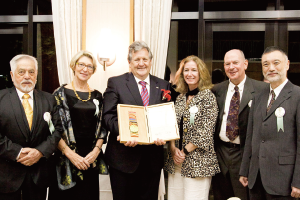
The Scientific Steering Committeeof the Census of Marine Life
(Secretariat: Washington, DC, USA)
Reason for Awarding
The Scientific Steering Committee (SSC) of the Census of Marine Life (CoML), (Secretariat: Washington, DC, USA), provided overall governance to the CoML, a grand global project. The objective of the Census was to survey and analyze changes from past to present in marine life biodiversity, distribution and abundance, and to compile the resultant data into a comprehensive database called the “Ocean Biogeographic Information System (OBIS),” to be used in forecasting the future of marine life.
The CoML comprised a global network of over 2,700 researchers in more than 80 nations who engaged in a 10-year investigation of ocean life forms, commencing in 2000. Census projects were divided into three major research components, respectively focusing on the past, present and future of marine life. To investigate the past, the History of Marine Animal Population (HMAP) studied historical archives. Teams of fisheries scientists, historians, economists and others conducted case studies in various parts of the world, analyzing data from various sources, such as old ship logs, monastic records, restaurant menus, fish bones and shell middens. From these studies, HMAP researchers produced records providing a picture of life in the oceans before the advent of modern fishing.
The Ocean Realm Field Projects, through 14 field projects, investigated world oceans life of the present day. The areas of study included not only major shallow-water habitats (shore areas, coral reefs etc.) but also unique ocean realms, such as hydrothermal ecosystems, cold seep ecosystems, mid-oceanic ridges, and the Arctic Ocean. These projects were carried out using a combination of acoustics, engineering, genetics and other technologies.
The research component for forecasting future ocean life was organized under the rubric of the Future of Marine Animal Populations (FMAP). This group focused on integrating data from many different sources, including fishery and climate change, and on creating new analytical tools for predicting marine populations and the possible future composition of ecosystems.
As stated above, the CoML was a scientific initiative to assess and explain life in all the world’s oceans, including the compilation of centuries-old information and the prediction of the future of marine life. Census data on 28 million observations of 120,000 species were recorded in the Ocean Biogeographic Information System (OBIS) and posted on the Internet, to be made available to everyone around the world. Especially noteworthy is the fact that 5 million records are added to OBIS each year.
Moreover, the CoML was active in education and outreach initiatives to ensure that Census findings were communicated to a broad public audience in collaboration with artists, composers and filmmakers, even cartoonists and weavers. It is significant that diverse means of expression were used to disseminate research outcomes to the general public. To help develop the next generation of marine scientists, the CoML also implemented programs to enable many youngsters to help gather data on organisms in nearshore habitats.
There is scientific, economic and political importance in promoting comprehensive investigation and understanding of the ocean and its inhabitants. Indeed, the United Nations Convention on Biological Diversity requires that signatories collect information on living resources, though as yet no nation has a complete baseline of such information. The CoML's global network of researchers will contribute greatly to the collection of information on marine life resources and to formulating policies for biodiversity conservation, sustainable use of marine resources and so forth.
Though oceans cover about 70% of the Earth's surface, a great portion of the ocean still remains unknown, further out of human reach than land. The Census of Marine Life was an interdisciplinary and comprehensive project in which researchers from various fields collaborated to survey the history and diversity of ocean life. The Census of Marine Life was meant precisely to explore the true nature of life forms, which comprise a complex system in a closely interwoven natural environment. For this reason, the Census of Marine Life conforms well to the motive of the International Cosmos Prize, which upholds the principle of Harmonious Coexistence of Nature and Mankind.
This unprecedented international project, governed and promoted by the Scientific Steering Committee (SSC) of the Census of Marine Life, accomplished significant results. These achievements have made the SSC a deserving recipient of the International Cosmos Prize.
Curriculum Vitae of the Major Members The Scientific Steering Committee of the Census of Marine Life
Dr. Ian Poiner: Chairperson
| Date of Birth: March 15, 1953 | 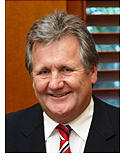 |
| Nationality: Australian | |
| Specialty: Tropical marine ecology | |
| B.Sc. Zoology, University of Queensland, Australia (since 1976); | |
| Ph.D., University of Queensland, Australia (since 1978); | |
| Research Scientist, The Commonwealth Scientific and Industrial Research Organisation (CSIRO) Division of Fisheries (1983-85); | |
| Senior Research Scientist, CSIRO Division of Fisheries 1985-86); | |
| Research Fellow, Botany Department, University of British Columbia, Canada (1987); Senior Research Scientist, CSIRO Division of Fisheries (1988-89); | |
| Principal Research Scientist, CSIRO Division of Fisheries (1989-90). | |
| Principal Research Scientist, CSIRO Division of Fisheries (1990-95); | |
| Senior Principal Research Scientist, CSIRO Division of Fisheries (1995-1997); | |
| Senior Principal Research Scientist, CSIRO Marine Research (1997-01); | |
| Deputy Chief - Research, CSIRO Marine Research (2001 - 2004); | |
| Chief Executive Officer, Australian Institute of Marine Science (2004-present); | |
| Chairperson of the Scientific Steering Committee of the Census of Marine Life (2008-present) |
Dr. Frederick Grassle: First Chairperson, Co-Founder (Deceased)
| Date of Birth: July 14, 1939 | 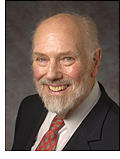 |
| Nationality: USA | |
| Specialty: Benthic ecology, ocean biogeography | |
| B.S. Yale University (1961) | |
| Ph.D. Duke University (1967) | |
| Assistant Scientist, Woods Hole Oceanographic Institution (1969-1973); | |
| Senior Scientist, Woods Hole Oceanographic Institution (1969-1989); | |
| Adjunct Scientist, Woods Hole Oceanographic Institution (1993-1996); | |
| Professor II, Rutgers University, Institute of Marine and Coastal Sciences, (1989-present); | |
| Director, Rutgers University, Institute of Marine and Coastal Sciences, (1989-2008); | |
| Chairperson of the Scientific Steering Committee of the Census of Marine Life (2000-2008) |
Dr. Victor A. Gallardo: Vice-Chairperson
| Date of Birth: November 3, 1934 | 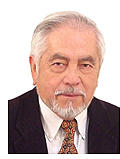 |
| Nationality: Chilean | |
| Specialty: Benthic ecology | |
| State Professor (Biology and Chemistry), University of Chile (Studies at the University of Concepcion, Concepcion, Chile (1961); | |
| Ph. D. (Biology), University of Southern California, Los Angeles, California, USA (1963-67); | |
| Master of Marine Affairs, University of Rhode Island, Kingston, Rhode Island, USA (1973-74); | |
| Vice-Chair of the Scientific Steering Committee of the Census of Marine Life (2005-present) |
Dr. Myriam Sibuet: Vice-Chairperson (Deceased)
| Date of Birth: July 30, 1945 | 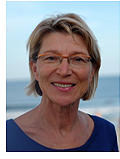 |
| Nationality: French | |
| Specialty: Deep-sea ecosystems | |
| Thèse de doctorat d'Etat, Dr ès Sciences Naturelles, Université Pierre et Marie Curie, Paris (1987); | |
| Research scientist and then Research Director at Institut français de recherche pour l'exploitation de la mer (IFREMER) (1969-2006); | |
| Senior Scientist in residence at the Institut Océanographique de Paris, Fondation Albert 1er de Monaco since 2006 and member of the Scientific Committee (2006-present); | |
| Science and Technology adviser to the President of Ifremer (2005- present) | |
| Vice-Chair of the Scientific Steering Committee of the Census of Marine Life (2008-present) |
Mr. Jesse Ausubel: Co-Founder
| Date of Birth: September 27, 1951 | 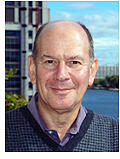 |
| Nationality: USA | |
| Specialty: Environmental science & technology | |
| Harvard College, BA with honors (1974); | |
| Columbia University, Master of International Affairs & Master of Business Administration (1977); | |
| The Rockefeller University, director, Program for the Human Environment, and senior research associate (1993- present); | |
| fellow in science and public policy (1989-1993); | |
| Woods Hole Oceanographic Institution, adjunct scientist (1995-present), guest investigator (1990-1994); | |
| Alfred P. Sloan Foundation, vice president (2009-present), program director (1994-2009), responsible for basic scientific research and for history of science & technology |
Census of Marine Life Timeline of Activities and notable events
| July 2, 1996 | Dr. Frederick Grassle and Mr. Jesse Ausubel meet to discuss potential value of a large cooperative international scientific exploration program on marine biodiversity. |
| March 1997 -August 1998 |
Feasibility workshops held to define the scope of the program. |
| January 1999 | An International Secretariat and International Scientific Steering Committee form. The Scientific Steering Committee to guide the direction of the research and ensure that the program objectives are met. |
| June 1999 | At its first meeting, the Scientific Steering Committee agrees that the program purpose should be “To assess and explain the diversity, distribution, and abundance of marine life.” |
| May 2000 | The first database, Ocean Biogeographic Information System (OBIS), demonstration projects, launches. |
| October 2000 | To answer the question “What lived in the ocean?,” the “Oceans Past” research element, the History of Marine Animal Populations (HMAP) project, launches . |
| April 2001 - | The ocean is divided into six realms that can be explored using available October 2002 technology, and the “Oceans Present” research element is established. |
| February 2002 - | The establishment of 13 National and Regional Implementation Committees |
| June 2004 | (NRICs) that serve to strengthen the global reach of the Census in support of marine biodiversity research. |
| November 2002 | An Education & Outreach initiative is established to ensure Census findings are communicated to a broad public audience. |
| June 2003 | The “Oceans Future” research element, the Future of Marine Animal Populations (FMAP) project, is set in motion. |
| October 2003 | The first “All Program” meeting is held, in which representatives from all projects and NRICs come together to share data, findings, and ideas. |
| April 2004 - January 2005 |
The “Oceans Present” research element grows to 14 projects. |
| November 2005 | The second “All Program” meeting is held. At the midpoint of the program, the participants discuss progress to date and plans for the future. |
| October 2006 | Over 130 participants from 27 countries gather in Kobe, Japan for the first Natural Geography in Shore Areas (NaGISA) World Congress. |
| July-October 2007 | In a second phase of targeted global engagement, the Census establishes new NRICs in Indonesia, Korea, and the Arabian Sea. |
| October 2007 | Mapping & Visualization and Marine Barcoding initiatives are established. |
| November 2007 | The third “All Program” meeting is held, where plans to synthesize data and results begin to take shape. |
| April 2008 | The Census enters its “Synthesis” phase and establishes a Synthesis Group to organize, integrate, and synthesize the vast data and information gathered by the Census to ensure comprehensive content and products for 2010. |
| February 2009 | The fourth “All Program” meeting, is structured as Synthesis workshops. |
| October 2010 | The Census program releases its major ten-year program findings (“Decade of Discovery”) in London, England. The First Census shows life in the ocean is richer, more connected, and more impacted than expected. |
